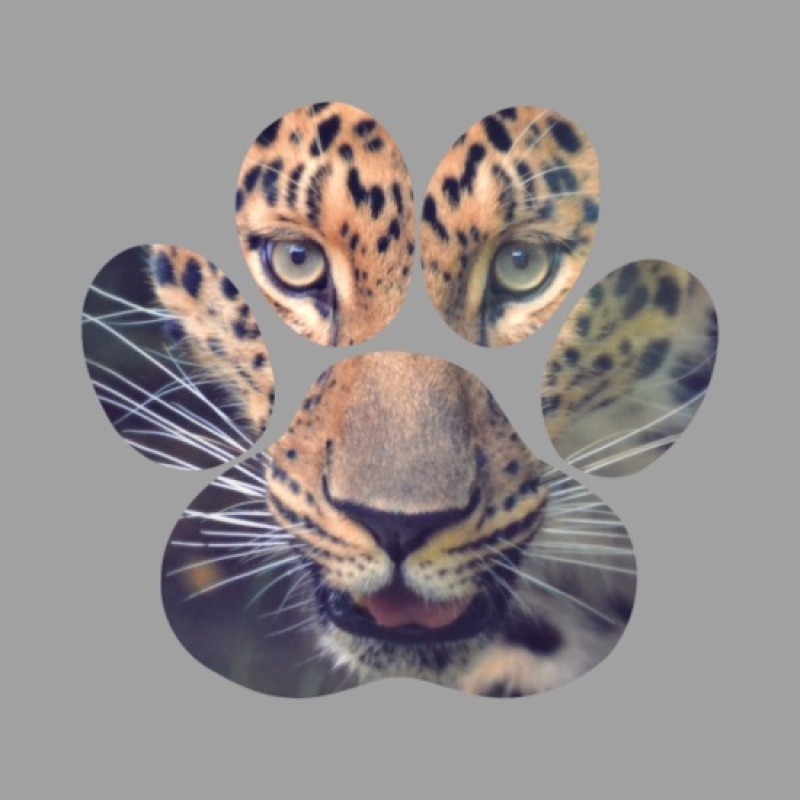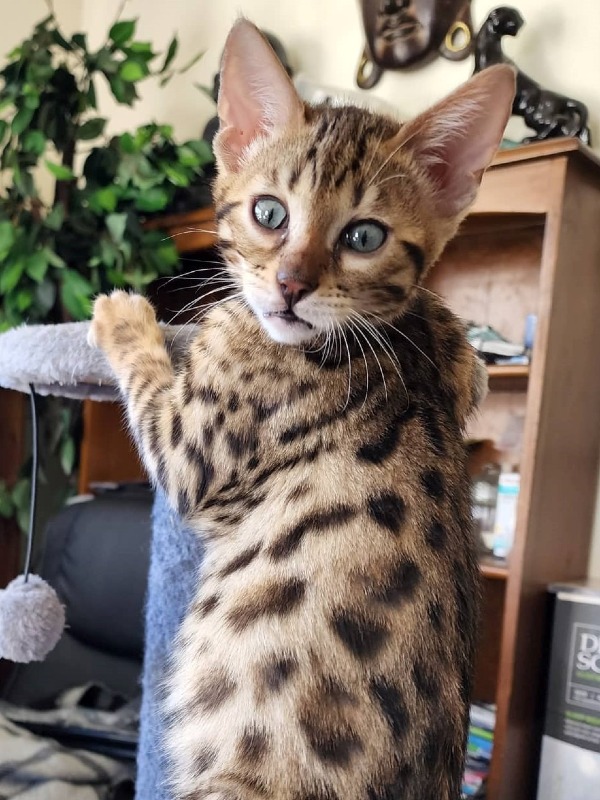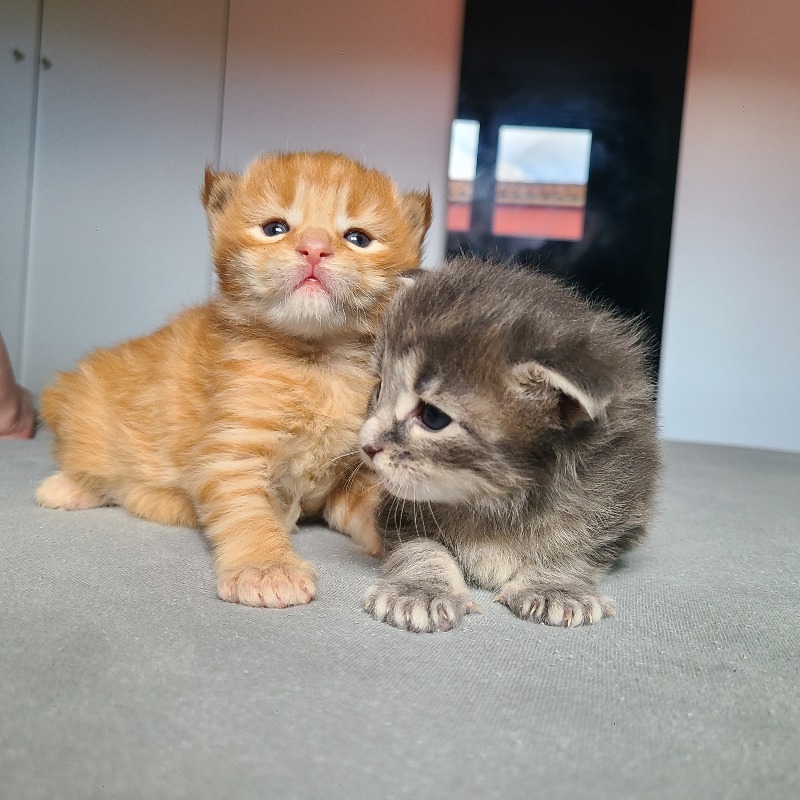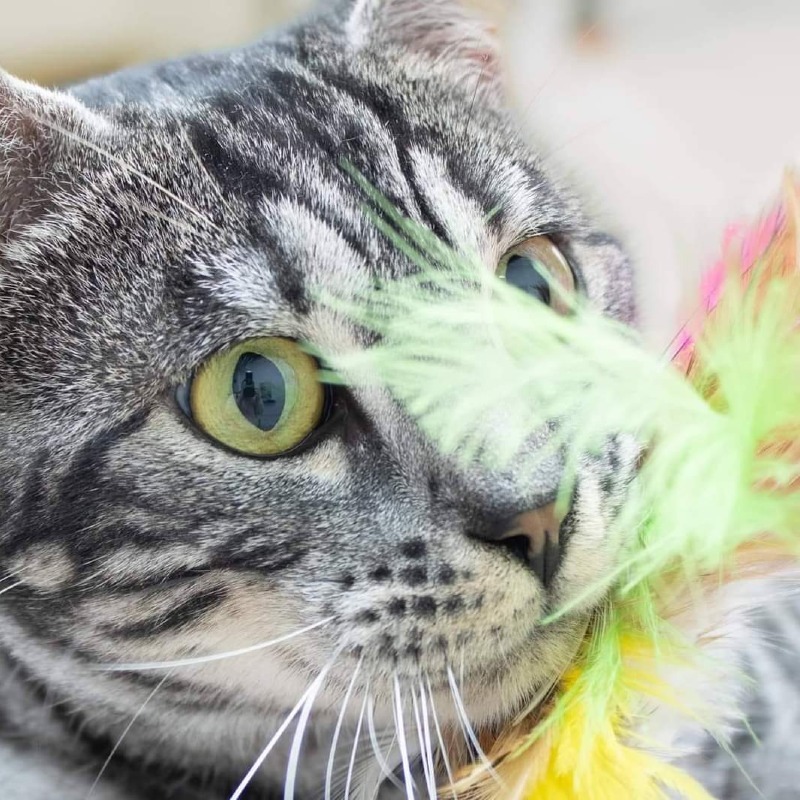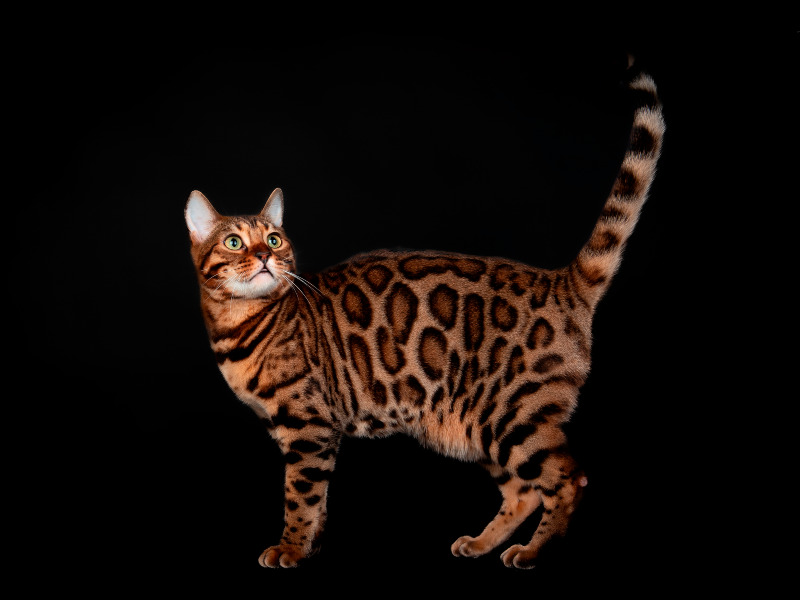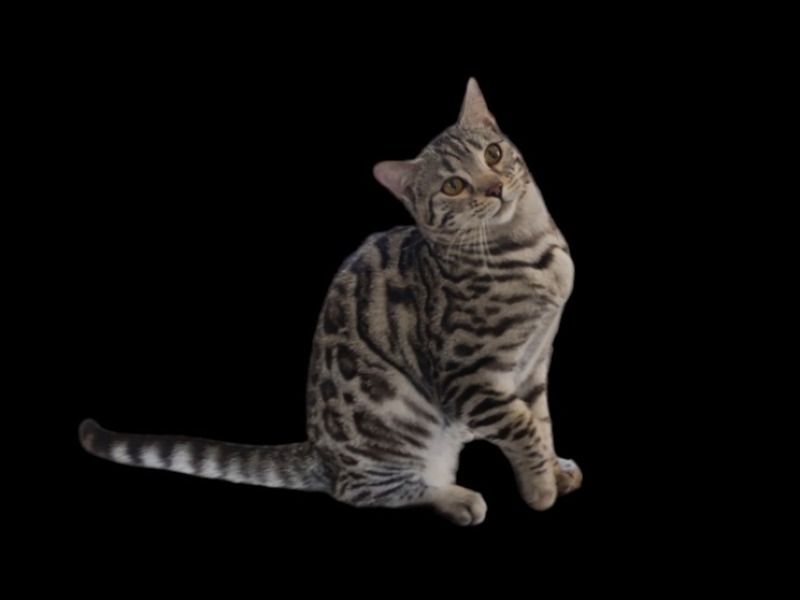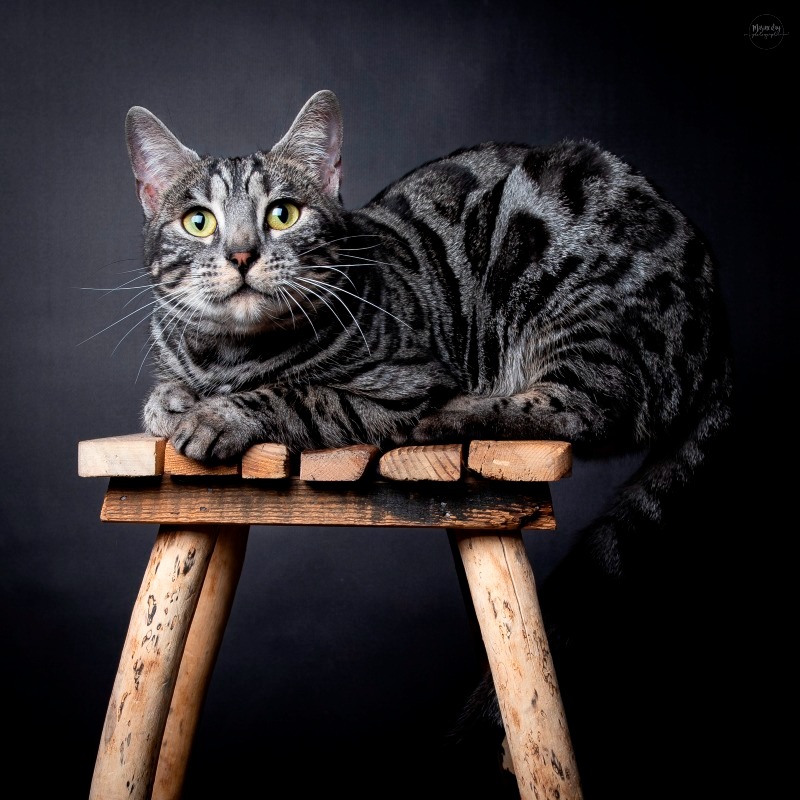Bengal
Welcome to our page dedicated to the breed of cat bengal!
Here, you will find all the useful information about bengal. This descriptive profile will allow you to discover the aspects of this breed. You can notably consult information about the average price, monthly and annual upkeep expenses, their health, name ideas, as well as their official recognition by competent authorities.
Explore this page to discover everything you need to know.
Overall description of the breed
The Bengal cat is a majestic and exotic cat breed, known for its rugged beauty and unique appearance. Its history dates back to the 1960s, when the breed was developed by Jean S. Mill, an American breeder, from crosses between domestic cats and Asian leopards (Prionailurus bengalensis).
The ancestors of the Bengal are therefore domestic cats and Asian leopards. The initial aim was to create a domestic cat with the wild appearance and spotted or mottled patterns of leopards. However, due to the difficulty of crossing these species, today's Bengal is the result of later crosses between the original Bengal and other breeds, notably the Abyssinian, Egyptian Mau and Siamese.
The Bengal's impressive morphology reflects its wild heritage. It has a muscular, athletic body of medium to large size. Its head is medium-sized, with almond-shaped eyes that can be emerald green, blue or gold, and medium-sized ears that are rounded at the tip. The most distinctive feature of the Bengal is its luxurious coat, which may be marked by rosettes (spots aligned in a rosette shape) or be marbled (like a marble pattern). The basic colours of the Bengal's coat are usually brown, gold, bronze or silver.
The Bengal's character is energetic, intelligent and playful. They are very active cats who like to explore their environment and play interactive games with their family. Although it originated from crosses with wild felines, the domestic Bengal is renowned for being friendly and affectionate towards humans. They are often described as outgoing, vocal and with a strong hunting instinct.
In terms of average weight, a Bengal cat typically weighs between 4kg (around 8.8lbs) and 7kg (around 15.4lbs). In terms of size, an adult Bengal cat generally measures between 25 cm and 35 cm (around 10 to 14 inches) in height to the withers.
The Bengal's founding breed club is the International Bengal Cat Society (TIBCS), established in 1986. However, the Bengal was officially recognised by the American Cat Fanciers Association (ACFA) in 1991, when the first breed standard was drawn up. Since then, the Bengal has been recognised by several international cat organisations, including the Fédération Internationale Féline (FIFe) and the Cat Fanciers' Association (CFA).
Thanks to its striking appearance and playful character, the Bengal has become one of the most popular cat breeds worldwide. Its resemblance to wild felines and its affectionate attitude towards humans make it an ideal choice for cat lovers looking for a unique and endearing companion. With recognition from renowned cat organisations, the Bengal continues to grow in popularity and amaze cat lovers around the world.
Awareness of acquiring an animal
Each animal is a sensitive being, deserving love, attention and care.
When you choose to adopt an animal, you take on the responsibility of ensuring its health and well-being throughout its life.
To learn more about animal welfare, we invite you to consult our FAQ by clicking the button below:
Origins
The Bengal cat is a breed resulting from a cross between the domestic cat and the Asian leopard cat (Prionailurus bengalensis). This latter is a small wild feline native to Southeast Asia, known for its spotted coat resembling that of leopards. The purpose of this crossbreeding was to create a domestic cat with the wild appearance of the leopard cat but possessing the gentle and affectionate temperament of domestic cats. The first crossbreeding attempts date back to the 1960s, but it was in the 1980s that the breed truly began to develop, thanks in particular to the efforts of geneticist Jean Mill in the United States. Since then, the Bengal has become a popular and recognized breed for its beauty and unique character.
History
The history of the Bengal cat begins in the 1960s with Jean Mill, an American geneticist. She crossed an Asian leopard cat with a domestic cat to obtain hybrid kittens, with the aim of combining the wild beauty of the former with the gentle temperament of the latter. Initially, these hybrid cats were used mainly for genetic research. However, continued efforts in selection and breeding have allowed to stabilize the desired characteristics. In 1983, the Bengal breed was officially recognized by The International Cat Association (TICA). Since then, the Bengal has gained popularity worldwide, appreciated for its exotic appearance and playful and affectionate character.
Standard
The Bengal breed standard states that these cats must have a wild appearance with a athletic and well-muscled body. Their head is broad with rounded contours and high cheekbones. The eyes are large, oval and expressive, of green or golden color. The coat is short, dense and incredibly soft, with a pattern of spots or marbling contrasting on a golden or silvery background. The legs are sturdy, the hind legs being slightly longer than the front ones, and the tail is thick, ending in a black tip. Every detail of the Bengal must evoke its wild heritage while showing harmonious domestic traits.
Physical characteristics
The Bengal is a medium to large-sized cat, with males generally weighing between 4.5 and 7 kg, while females weigh between 3.5 and 5.5 kg. Their short coat is dense and silky, with a distinctive rosette or marbling pattern, often compared to that of a leopard or ocelot. Colors vary, including brown tabby, seal lynx point, seal sepia, and seal mink tabby. Their silhouette is sleek and muscular, with a thick tail and an athletic posture. Their eyes are large, oval and bright, adding to their exotic appearance. The Bengal is known for its wild look while still maintaining a soft touch.
Character
Bengals are very active and curious cats. They love to play, climb, and explore their environment, making them very dynamic companions. Their intelligence is remarkable, which can translate into a certain independence, but also a great learning ability. Sociable and affectionate, they deeply attach to their owners and do not like to be left alone for too long. Their voice is distinct, and they do not hesitate to communicate with their humans. The Bengal is also known for its compatibility with water games, which is unusual for cats. They need mental and physical stimulation to be happy and healthy.
Life expectancy
Bengal cats have a relatively long life expectancy, often between 12 and 16 years, or even more with good care and balanced nutrition. Their longevity depends on various factors such as genetics, lifestyle, quality of veterinary care, and diet. Like all breeds, Bengals should have regular visits to the veterinarian, up-to-date vaccinations, and prevention against parasites. A quality diet, rich in protein and essential nutrients, as well as a stimulating environment also contribute to their good health and longevity.
Exercise and activity needs
The Bengal is an extremely active breed that needs a lot of exercise to stay healthy and happy. They love climbing, jumping, and exploring, so a cat tree or wall shelves for cats are ideal additions to their environment. Bengals also enjoy interactive games, such as feather toys, lasers, and even water games. It is essential to stimulate them mentally and physically to avoid boredom and destructive behaviors. They appreciate walks on a leash and secure outdoor spaces. A happy Bengal is a busy Bengal, with regular opportunities to play and explore.
Recommended diet
Bengals require a diet rich in high-quality animal proteins. A combination of dry and wet food is often recommended to balance their diet. Dry food should be specifically formulated to meet the nutritional needs of active cats, with high-quality ingredients. In terms of cost, feeding a Bengal can vary between 30 and 60 euros per month, depending on the brands and types of food chosen. It is crucial to provide fresh and clean water at all times and to avoid foods containing artificial additives or low-quality by-products to ensure their health and well-being.
Training and obedience
Bengals are very intelligent cats and can be trained to perform various tricks and commands, just like dogs. They respond well to positive reinforcement methods, such as treats and praise. Training can include litter box use, learning tricks like sitting, shaking paws, or even walking on a leash. It is important to start training from a young age for better results. Bengals enjoy mental challenges, so incorporating puzzle games can be very beneficial. Early socialization is also crucial for them to get used to different people and situations.
Behavior with children
Bengals are generally very sociable and can get along well with children, especially if they are introduced and socialized correctly from a young age. Their playful and active nature often matches well with children's energy, creating a dynamic and fun family environment. However, it is essential to teach children to respect the cat, not to handle it roughly or invasively, and to understand the signs of stress or discomfort in the animal. Initial supervision is recommended to ensure that interactions are positive for both parties, helping to establish a harmonious and safe relationship.
Compatibility with Other Animals
Bengals can coexist with other pets, but it often depends on their socialization and individual temperament. They are generally curious and sociable, but can exhibit territorial behaviors. A gradual and supervised introduction is essential to establish peaceful coexistence. They often get along well with other cats if they are accustomed to living in groups from a young age. With dogs, a slow and positive introduction is also necessary. Bengals may be less tolerant towards small animals like rodents or birds, due to their hunting instinct. Supervision is therefore crucial in these cases.
Grooming needs
Grooming a Bengal is relatively simple thanks to their short and dense coat that doesn't require intensive care. Weekly brushing is usually enough to remove dead hair and maintain the shine of their fur. Bengals tend to like water, which can make occasional baths easier compared to other breeds. In addition to the coat, it's important to regularly check and clean the ears to prevent infections, as well as trim the claws if needed. Good oral hygiene, including regular teeth brushing, is also recommended to prevent dental problems.
Health
The Bengal is generally a robust breed, but like all cat breeds, it is susceptible to certain genetic conditions. Common health problems in Bengals include hypertrophic cardiomyopathy (a heart disease), hip dysplasia, and hereditary diseases such as progressive retinal atrophy. It is essential to choose a responsible breeder who tests their breeding cats for these conditions to minimize risks. Regular veterinary check-ups, quality nutrition, and rigorous parasite prevention are also crucial for maintaining their health. Bengals also benefit from regular vaccinations and a healthy lifestyle to thrive.
Average price
The price of a Bengal cat varies depending on many factors, including lineage, pedigree, breeder, and the quality of the cat (pet, breeding, or show). On average, the cost of a pet Bengal ranges between 800 and 1500 euros. Bengals intended for show or breeding can cost between 1500 and 3000 euros, or even more for exceptional quality specimens with prestigious pedigrees. It is important to research and choose a reputable breeder who adheres to the breed standards and ensures a good start in life for the kittens. The initial investment in a Bengal often includes vaccinations, microchipping, and health certificates.
Expenses
Monthly expenses for a Bengal can vary depending on various factors, but they typically include food, litter, veterinary care, toys, and accessories. On average, monthly costs can range between 50 and 100 euros. Quality food is the biggest part of this budget, followed by litter costs and regular veterinary care. Toys, accessories, and grooming equipment can also represent a significant portion of expenses, especially to keep the cat stimulated and healthy. Bengals, being very active, may require more toys and activities than other breeds.
Name ideas
Choosing a name for your Bengal can be inspired by its exotic beauty and unique character. Here are some suggestions: Leo, Luna, Simba, Maya, Nala, Max, Zuri, Milo, Tasha, Thor, Rajah, Cleo, Kai, Zara, Loki, Bella, Rocky, Saffron, Tiger, Ruby. These names often reflect the majestic appearance and dynamic character of the Bengal. Opt for a name that resonates well with you and your cat, and that is easy to pronounce. Bengals are smart and responsive, so they will quickly learn to respond to their name, especially if you associate it with positive moments like meals or games.
Legislation and regulation
In France, first-generation Bengals (F1) are subject to specific regulations due to their hybrid origin with the Asian leopard cat. Bengals from the fourth generation (F4) are considered domestic and are not subject to any special regulations. It is important to check local laws as regulations may vary from country to country. Generally, there are no specific restrictions for owning a Bengal, but it is always recommended to ensure your cat is properly registered and identified with a microchip. Breeders must also adhere to ethical and sanitary standards to ensure the welfare of the animals.
Official recognition
The Bengal is recognized by several major international feline associations. Among these, The International Cat Association (TICA) was one of the first to recognize the breed in 1983. The Cat Fanciers' Association (CFA) followed later. In France, the Bengal is recognized by the Livre Officiel des Origines Félines (LOOF). Other organizations, such as the Fédération Internationale Féline (FIFe) and the Governing Council of the Cat Fancy (GCCF) in the UK, also recognize the breed. These recognitions ensure that Bengals are judged according to strict breed standards, thus ensuring their quality and conformity to defined characteristics.
Pedigrees
The pedigrees of Bengals are available from various recognized breed clubs worldwide. In France, the LOOF (Official Book of Feline Origins) is the main organization issuing pedigrees. In the United States, TICA (The International Cat Association) and CFA (Cat Fanciers' Association) are the main organizations. In Europe, the FIFe (International Feline Federation) and the GCCF (Governing Council of the Cat Fancy) in the UK also issue pedigrees. These breed clubs maintain rigorous registers and ensure the traceability of lines, guaranteeing the purity and quality of Bengal cats. They also provide resources and support to breeders and owners.
Destination and usage
Bengals are primarily raised as pets because of their exotic appearance and affectionate temperament. Their intelligence and active nature also make them good candidates for cat competitions, where they can excel in agility and obedience. Some Bengals are also used as therapy cats, bringing comfort and happiness in environments such as nursing homes and hospitals. Their social nature and ability to interact positively with humans make them ideal for such activities. In summary, Bengals are versatile, being both loving companions and active participants in various feline activities.
Prohibitions
As for bans, first-generation Bengals (F1) may be subject to restrictions in some countries due to their hybrid nature. For example, in some US states, owning F1 Bengals is regulated and requires special permits. In France, only Bengals from the fourth generation (F4) are considered domestic and do not require special permissions. It is crucial to research local laws and regulations before getting a Bengal, especially if it is a generation close to the wild ancestor. Generally, F4 Bengals and beyond are not subject to specific bans and are widely accepted as pets.
Breeders of Bengal
Want to see more breeders of Bengal?
Check out the page of our directory listing all breeders of BengalClassified Ads of Bengal
Breed clubs of bengal
No of bengal breed clubs are currently registered on Preeders.
If you would like to highlight your breed club, sign up for free now and be the first to appear on this page.

